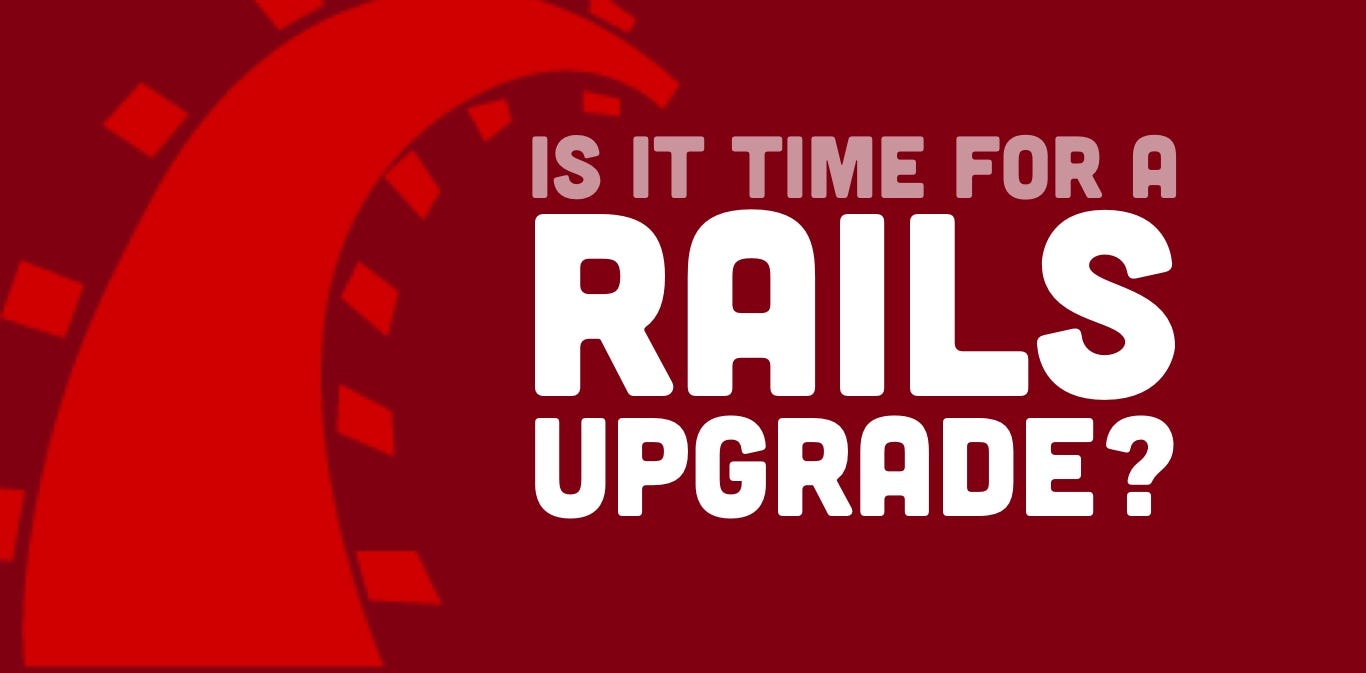
When businesses build their web applications on Ruby on Rails, a key factor in their success is keeping their platform up-to-date. One major issue companies face is falling behind in upgrades, particularly when moving from Rails 5 to Rails 6.2. While upgrades may seem like a routine part of maintaining a web app, the difference between these versions represents a critical leap in efficiency, security, and scalability. In fact, upgrading your Rails platform could have a massive impact on your business, both in terms of financial savings and operational efficiency.
In this article, we will explore why upgrading from Rails 5 to Rails 6.2 is a must-do for businesses looking to stay competitive, grow faster, and optimize their operations. Using challenges faced by various platforms as examples, we’ll demonstrate how upgrading could transform your company's future.
Many businesses operate under tight deadlines and resource constraints, leading them to push off critical upgrades, including their Rails framework. These delays often create the following problems:
The real question isn't "Why upgrade?" but "Why wait to upgrade?" Here are the top reasons why moving from Rails 5 to 6.2 can greatly benefit your business:
With Rails 6.2, performance improvements are noticeable across the board. The upgrade includes multi-database support, faster query processing, and the implementation of parallel testing—features that reduce the time spent on maintenance and increase your app's speed.
Rails 6.2 is built to withstand modern security threats, with improved tools to prevent SQL injection, XSS attacks, and other common web vulnerabilities.
One of the most significant changes in Rails 6.2 is its ability to scale. This version introduces Action Text and Action Mailbox, along with improvements to Active Storage, all of which help your app grow seamlessly.
The upgrade includes advanced features like Zeitwerk, a new code loader that makes debugging and managing your codebase easier and faster. These improvements free up your developers to focus on new features rather than dealing with maintenance issues, helping you bring innovations to market more quickly.
It's not just about improving your tech stack—upgrading your Rails platform can directly influence your bottom line. Here’s how:
With the enhanced speed and scalability of Rails 6.2, your business will be better equipped to handle a higher volume of users, customers, or sales without performance lags.
Rails 6.2’s improvements in background processing and database management mean you spend less time and money on technical debt and app maintenance.
Downtime can cost companies thousands of dollars in lost sales or dissatisfied customers. Rails 6.2 offers much-improved testing capabilities, reducing the risk of bugs that might take down your app at critical moments.
Upgrading Rails isn’t something that happens overnight, but the benefits far outweigh the short-term effort. Here’s how to make the process smooth:
Evaluate the gems, libraries, and custom code in your app that could be affected by an upgrade. While Rails 6.2 is backward-compatible with most Rails 5 code, certain dependencies might need updating.
Don’t upgrade your entire app in one go. Start with non-critical sections of your app, and once you confirm stability, move on to core components.
Make use of Rails 6.2's new performance tools to track improvements in speed, database queries, and overall user experience during and after the upgrade.
Here are some frequently asked questions to guide you through the upgrade process:
Yes! Even if you’re a small business, security and performance enhancements are crucial. As your company grows, you’ll need a platform that scales effortlessly.
The timeline depends on the complexity of your app. Typically, for a mid-sized application, the process could take between 2 to 6 weeks.
If your team has experience with Rails upgrades, it’s possible to manage the transition internally. However, hiring professionals can ensure a smoother, faster process with fewer roadblocks.
With proper planning, downtime can be minimized or eliminated. It’s best to implement upgrades during low-traffic hours and use staging environments for testing.
The ROI is significant in terms of cost savings, faster development times, and improved scalability, leading to higher revenues.
As of this writing, Rails 7 is in development, but Rails 6.2 remains the most stable and widely adopted version.